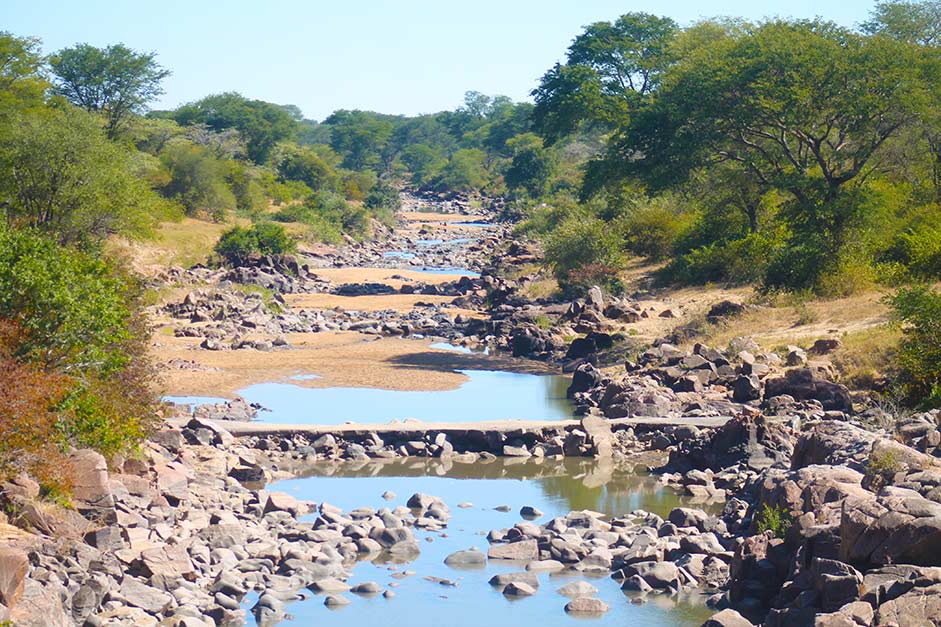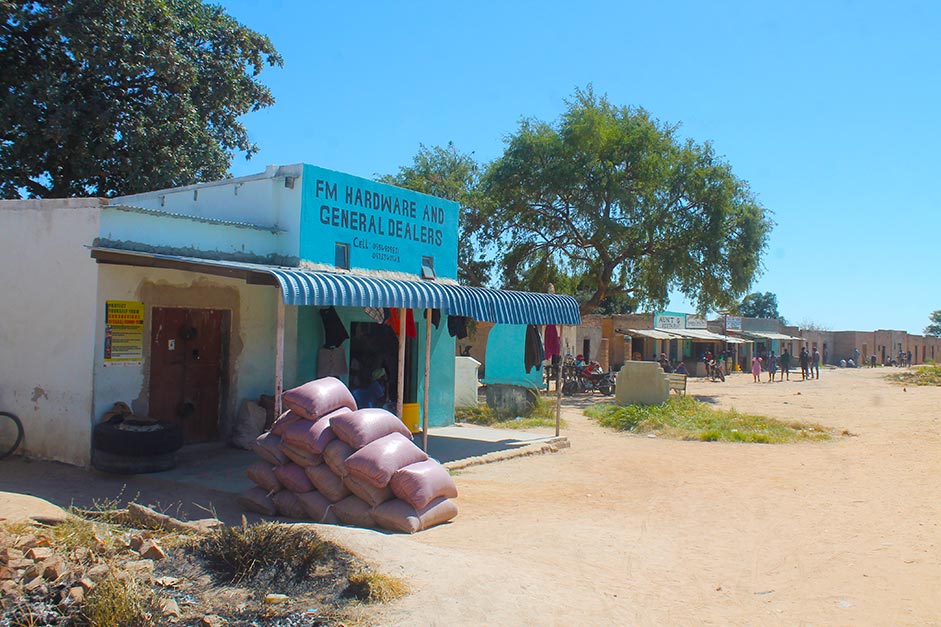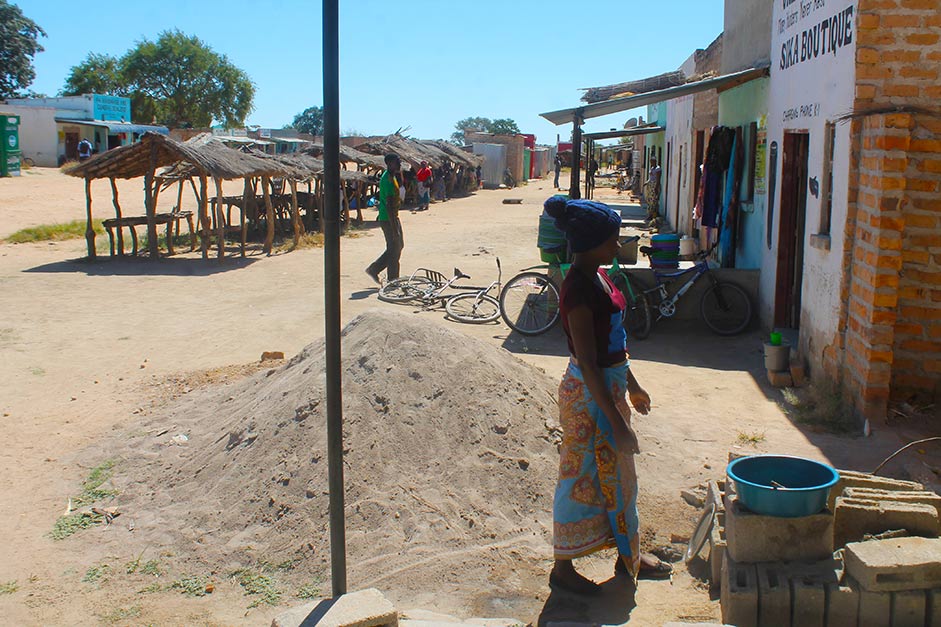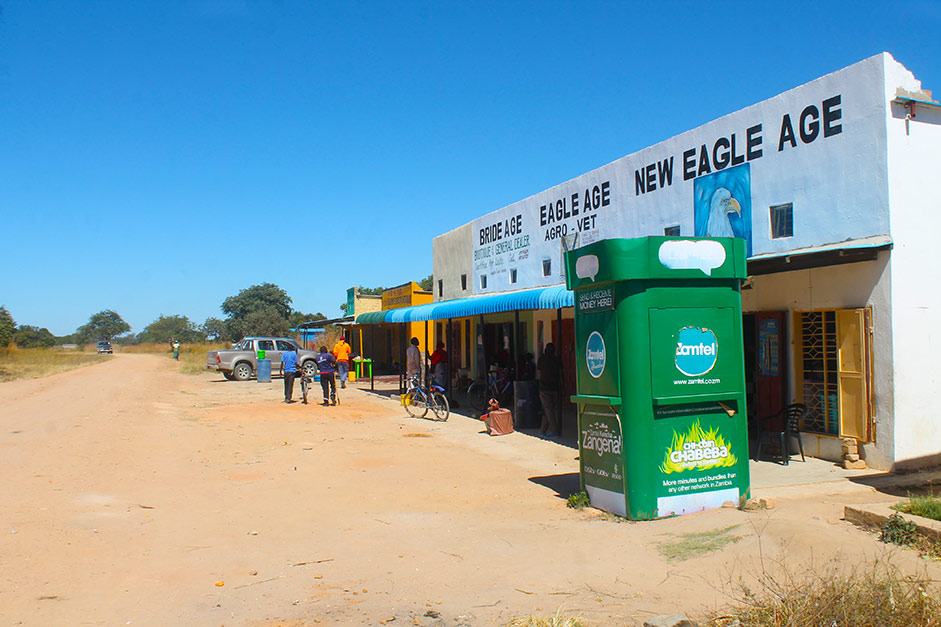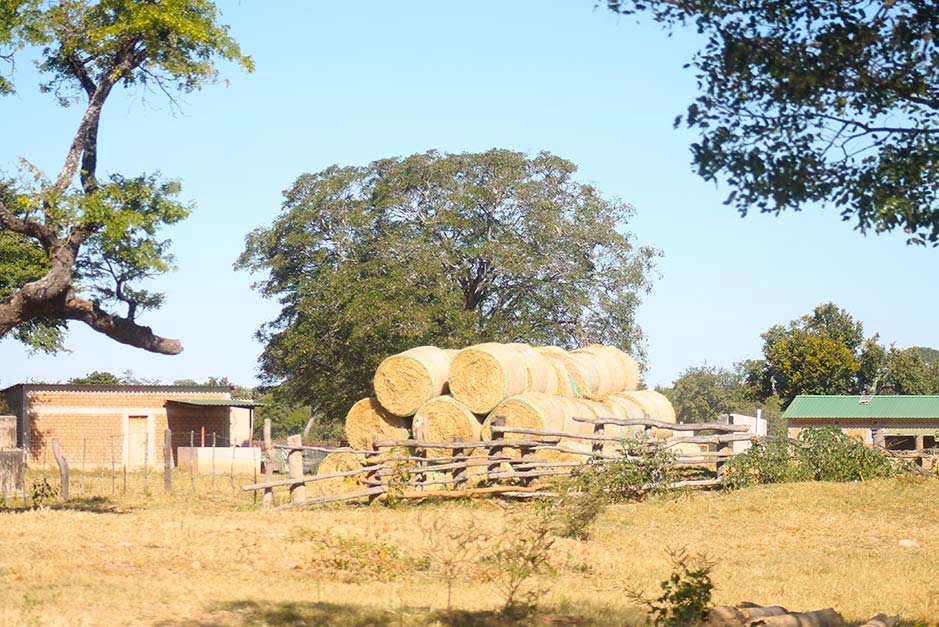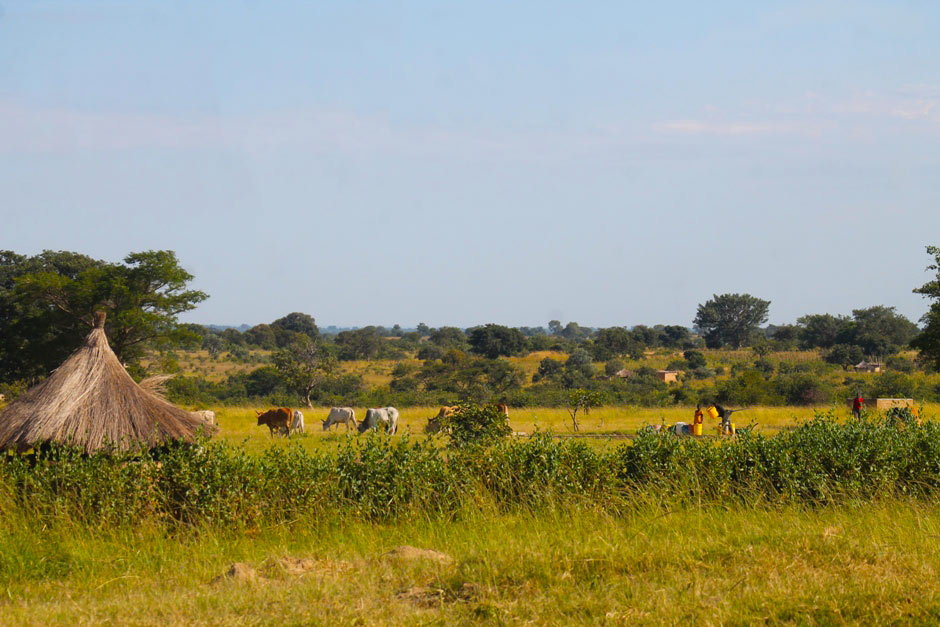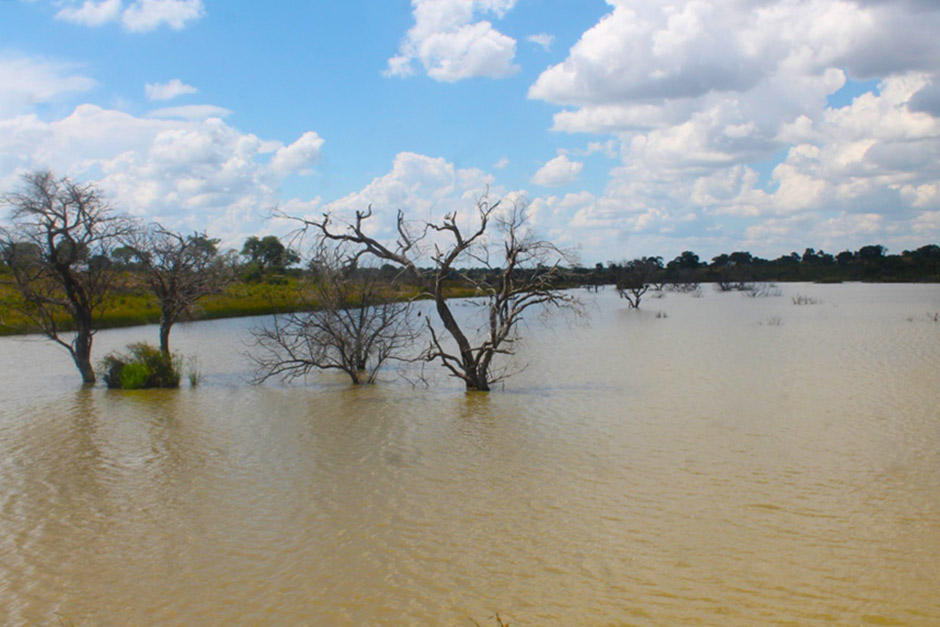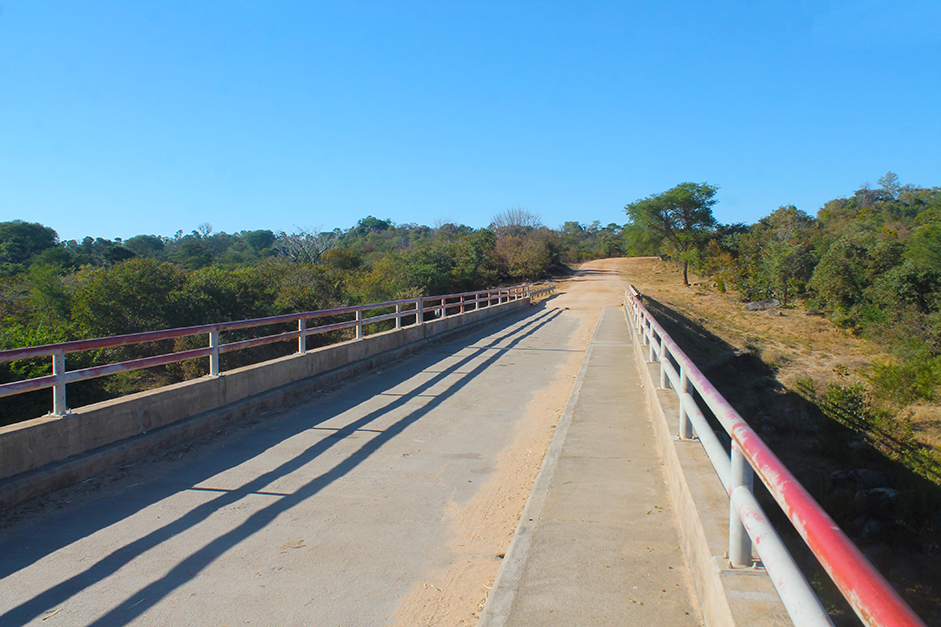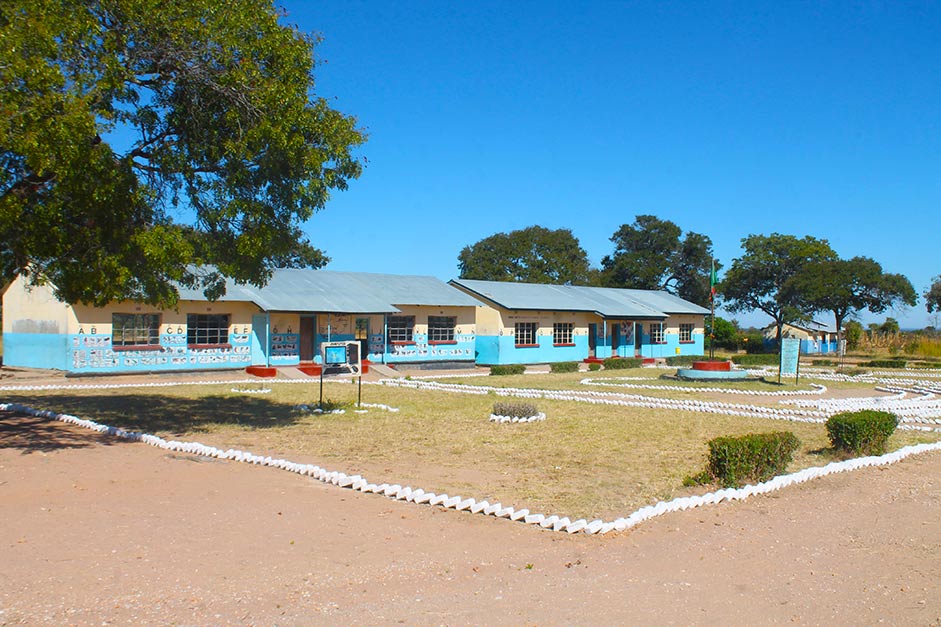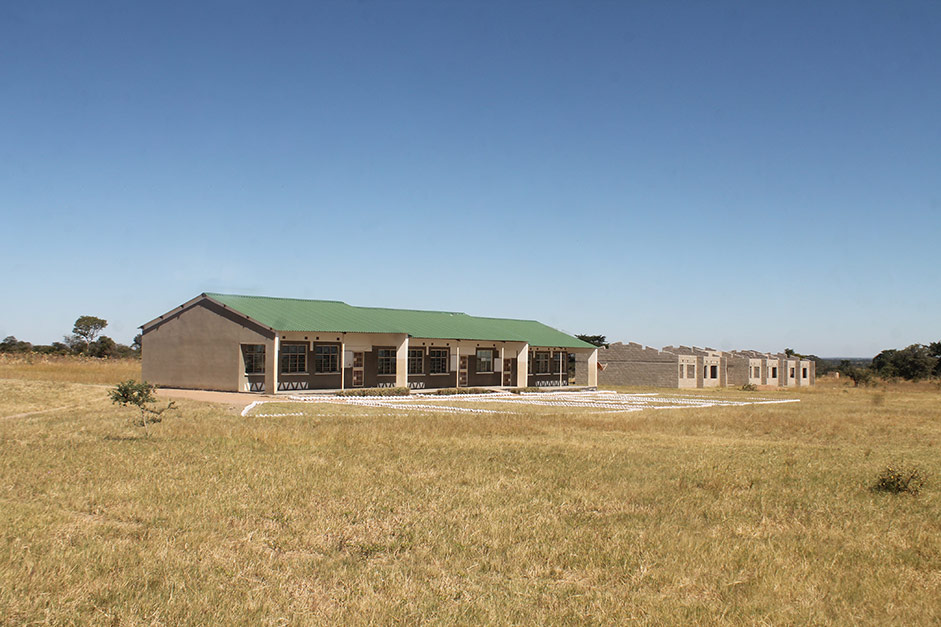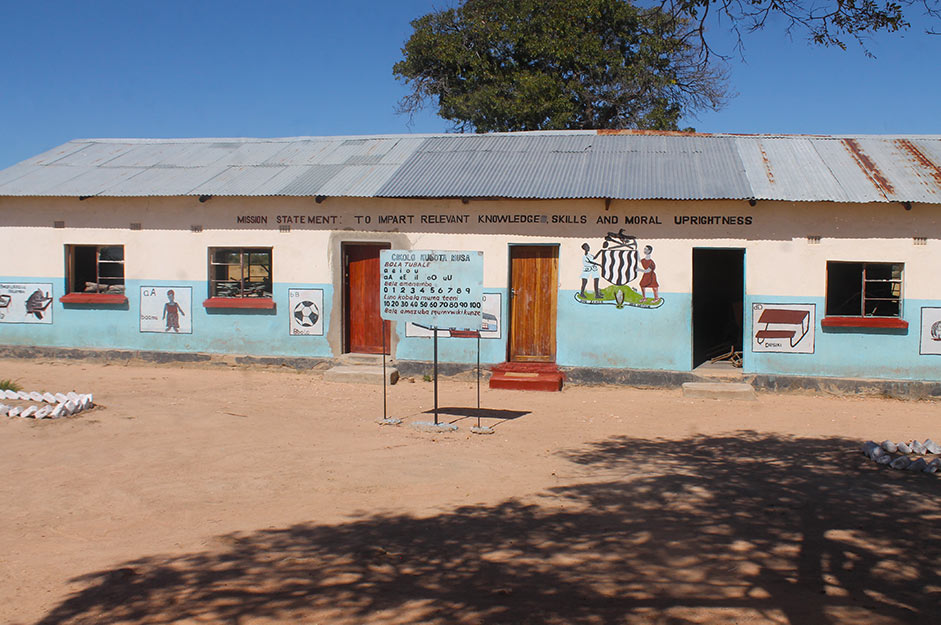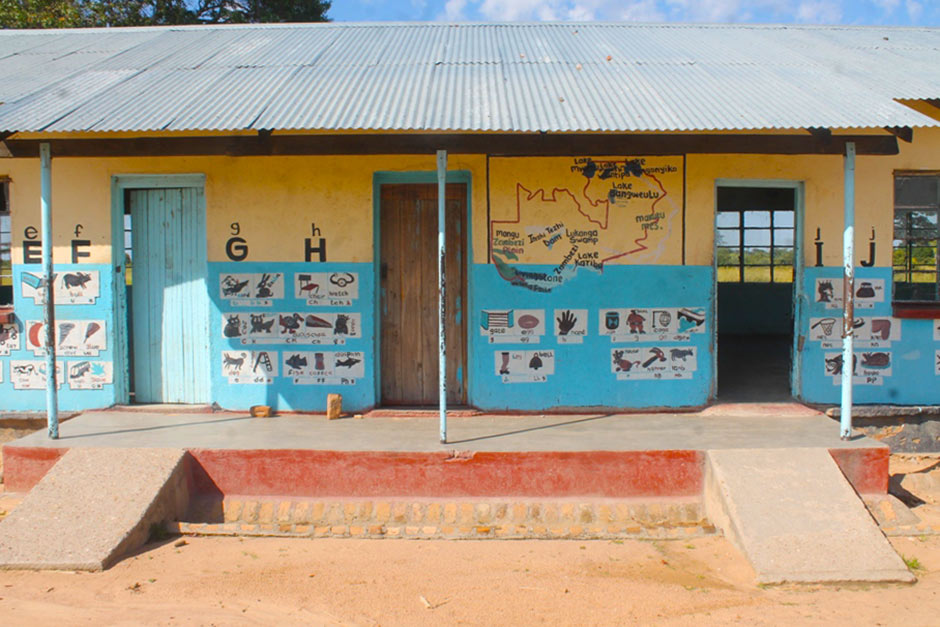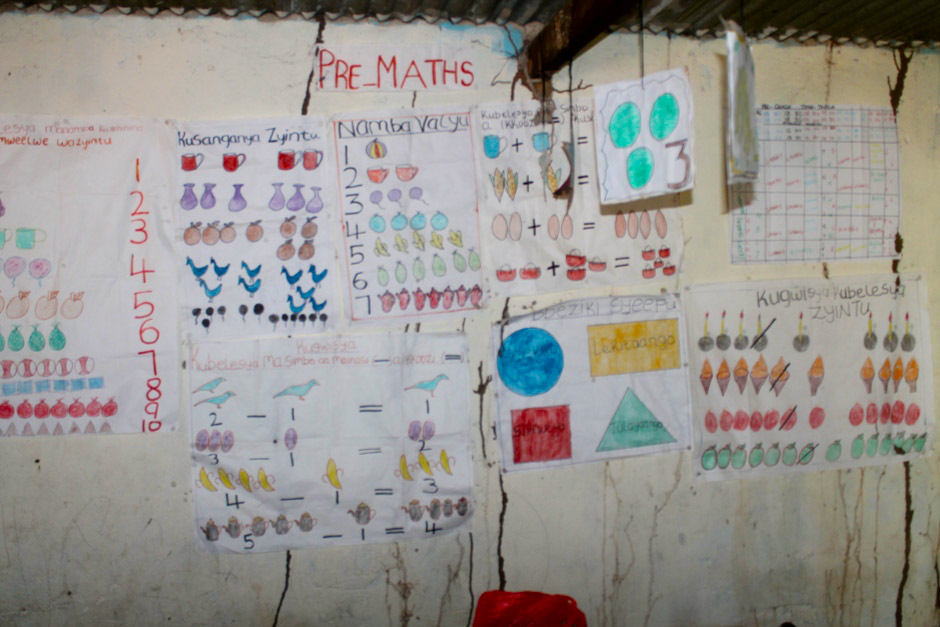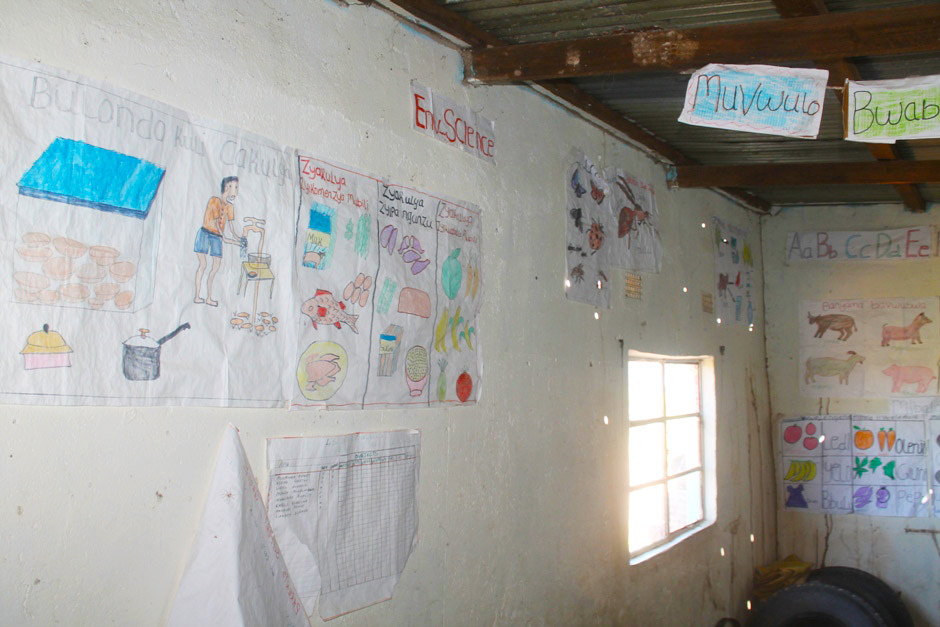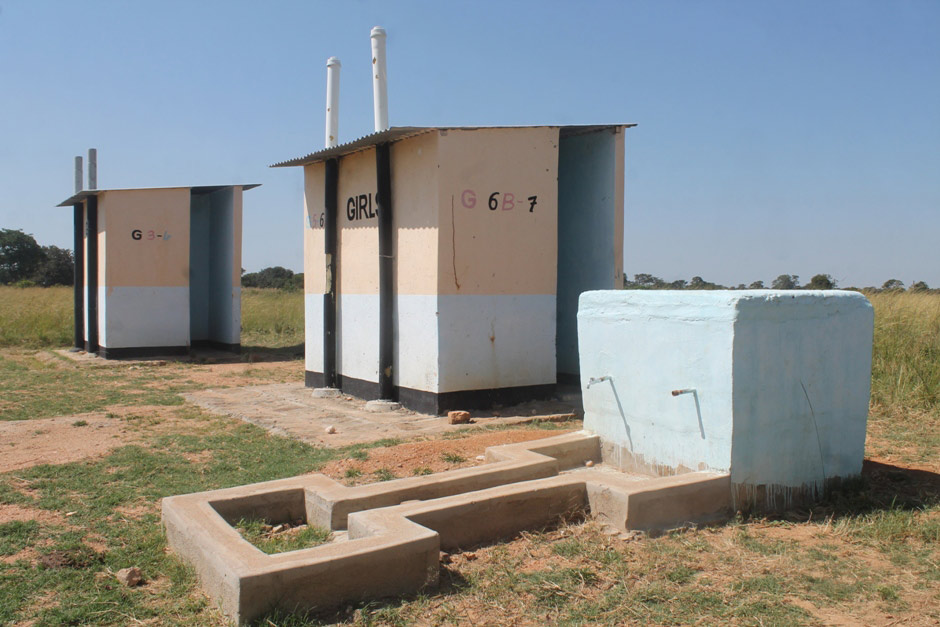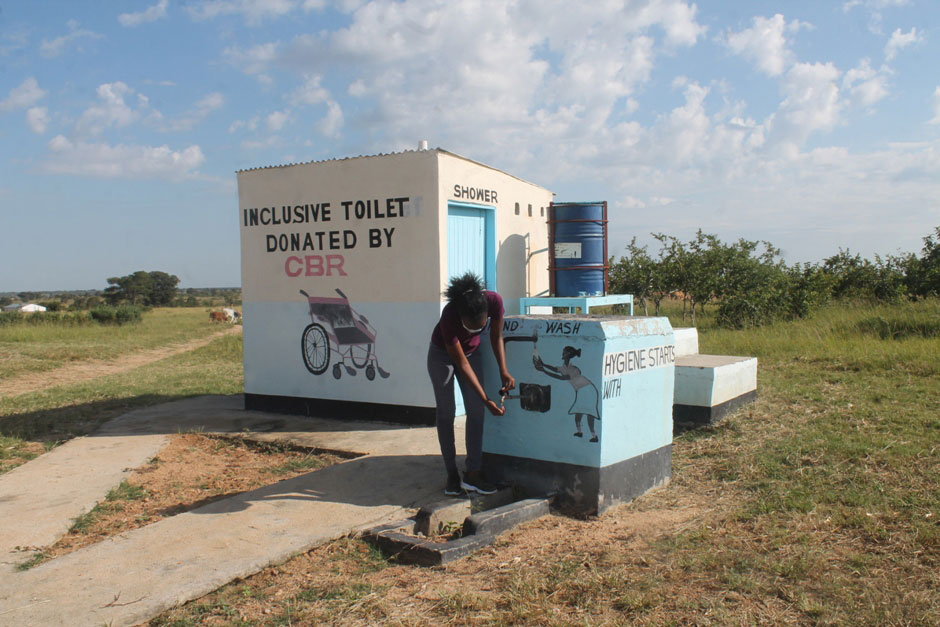1.3 Snapshot of Zambian settings Copy
Luyaba Inclusive School
You can listen to the content of the page by using the audio controls.
Local area
Luyaba Inclusive School is a rural school situated in Zimba District, Southern Province. It is surrounded by 67 villages with a population of about 2,200 people. The area has only one clinic, Luyaba rural health centre. The main sources of water in the area are hand pumps, 84 wells and 41 boreholes.
The area has six schools: Chidi, Kakopa, Luyaba Inclusive, Njabalombe, Sikalele and Simukanda primary schools. All these schools have classes from early childhood education (ECE) to Grade 9, except Luyaba Inclusive which has additional secondary classes up to Grade 12.
The surrounding community are mainly farmers, raising domestic animals and growing crops. There are also a number of small businesses which sell groceries and agricultural produce.
The following photos show some scenes from the area surrounding Luyaba.
Enrolment statistics
| Year | Boys | Girls | Total |
| 2015 | 8 | 11 | 19 |
| 2016 | 11 | 13 | 24 |
| 2017 | 17 | 15 | 32 |
| 2018 | 15 | 7 | 22 |
| 2019 | 19 | 11 | 30 |
| 2020 | 22 | 9 | 31 |
| Name of school | Boys | Girls | Total |
| Simukanda | 11 | 6 | 17 |
| Njabalombe | 5 | 10 | 15 |
| Sikalele | 4 | 0 | 4 |
| Kakopa | 4 | 1 | 5 |
| Chidi | 1 | 1 | 2 |
Luyaba’s involvement in inclusive education
Luyaba Inclusive School is one of six pilot schools in NAD-Zambia’s inclusive education programme, which began in 2015. The school has participated in various in-service training (INSET) workshops facilitated by the Principal Trainers, and all teachers have been trained. Continuous professional development (CPD) sessions have also been conducted by the school inclusive education coordinator (IECo), in conjunction with the zonal INSET coordinator (ZIC) and the school INSET coordinator (SIC).
The following photos show you what the school looks like.
Achievements
Various successes have been observed by the school during the inclusive education programme:
- Various awareness-raising meetings on inclusive education have been held (and are still ongoing) in the community and within the school community – staff and learners. Included at the community meetings are headmen, general community members and parents of children with disabilities.
- Learner-teacher interaction has improved: during teaching and learning activities, clubs, sports, and outside learning time. All learners are now involved in school activities.
- Learner-to-learner interaction has improved. Every day, non-academic activities take place such as clubs, quizzes, drama, sports, etc. This is helping to create well-rounded learners and assists in ‘leaving no one behind’.
- Teaching and learning methodology has improved. Teachers now use team teaching, catch-up sessions, buddying, field trips, projects, demonstrations, group-work, ad hands-on experiences using real objects
- Home-based education has been initiated for learners who cannot attend school.
- The school infrastructure and surroundings have been modified (and this is ongoing) so that every learner can access the school’s buildings easily: ramps and inclusive toilets have been built.
- Individual Education Plans (IEPs) have been created for some learners. Those involved are specialist teachers, health personnel, parents, teachers and the learners. Additional help is given to assist all learners, especially those with different learning challenges.
- Physiotherapy sessions are now available in school for some children who need this. As a result, some children who were out-of-school are now attending school (17 girls and 15 boys).
- The school works with all parents of children with disabilities, informing them about disability issues.
- The school now refers children with disabilities to the hospital/health centre or other appropriate centre where these children can get relevant support services. A lot of referrals have been made and this is made possible because of the work of the school inclusion team (SIT), which has some health personnel as members.
- The school IECo co-ordinates all the inclusive education activities in the school. The school IECo has helped in the proper identification of learners’ needs, and supports the teaching and learning of all learners.
- The SIT is composed of teachers, specialist teachers, learners, health personnel and community members. The team co-ordinates and monitors the implementation of inclusive education activities in the school and in the community. Parents and community members with various skills are engaged in the school’s programmes and involve them in CPD sessions. The SIT helps with various challenges such as:
- identification of learners with additional needs and their enrolment in school; in collaboration with community welfare assistant committee (CWAC) members, church groups, parents and community members, health personnel, and specialist teachers;
- infrastructure modification;
- assessing how inclusive education is progressing in the school, e.g., how inclusive is the teaching and learning;
- ensuring a conducive learning environment is achieved so that all learners access quality education;
- ensuring that all learners’ welfare is taken seriously.
- Reintegration: Girls who become pregnant while in school, and other vulnerable children, are now reintegrated into the school system.
- Vulnerable children are equally included; they take part in the learning and teaching process without any problems or being segregated in the school.
- Various action research activities have been undertaken (and are ongoing) in the school to identify challenges the learners are facing. As a result, several inclusive teaching and learning methods have been identified to help all the learners learn effectively. During action research activities, parents and other stakeholders such as the medical personnel, are fully involved.
- Income-generating activities have been identified through working together with parents and the general Luyaba community, e.g., gardening, goat-keeping and bee-keeping.
- Skills development: through community involvement, learners with severe disabilities have gained skills such as housekeeping and gardening.
- Teaching and learning aids production: The school has started making resources using local available materials in order to achieve quality teaching and learning. Parents, teachers, learners and community members are involved. A learning support base (LSB) has been created.
- Guidance and counselling – group and individual – has been strengthened to ensure that all learners grow into responsible citizens.
Continued challenges
- Overcrowded classrooms: the school does not have enough teachers, which leads to overcrowded classrooms, and over enrolment (due to the government’s free school policy).
- Inadequate infrastructure and furniture: there are not enough desks and classrooms.
- Long distances: some learners have to travel long distances to school and this poses serious challenges to learners with disabilities.
- Parents continue to hide their children with disabilities.
Conclusion
Providing inclusive education in Luyaba school has made it possible for all learners to come to school, and for learners with SEN to learn and mix freely with other learners in the school and with the general community: disability is not inability. It has enabled all parents and community members to respect all types of children and to enrol all children in school. It has made all teachers and learners change their attitudes and embrace all types of learners. All learners can learn, given a welcoming environment and, more importantly, a positive attitude from all involved.


